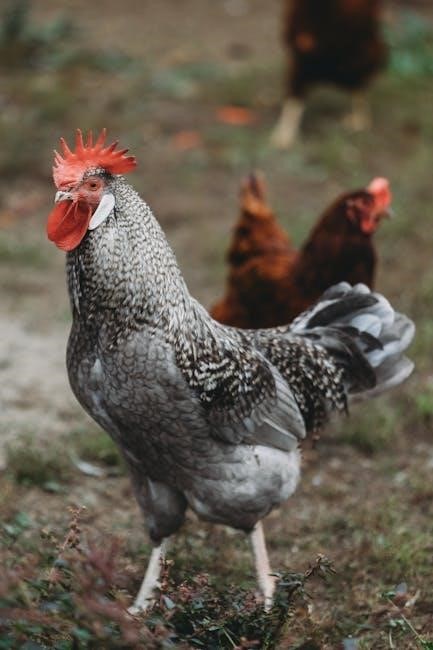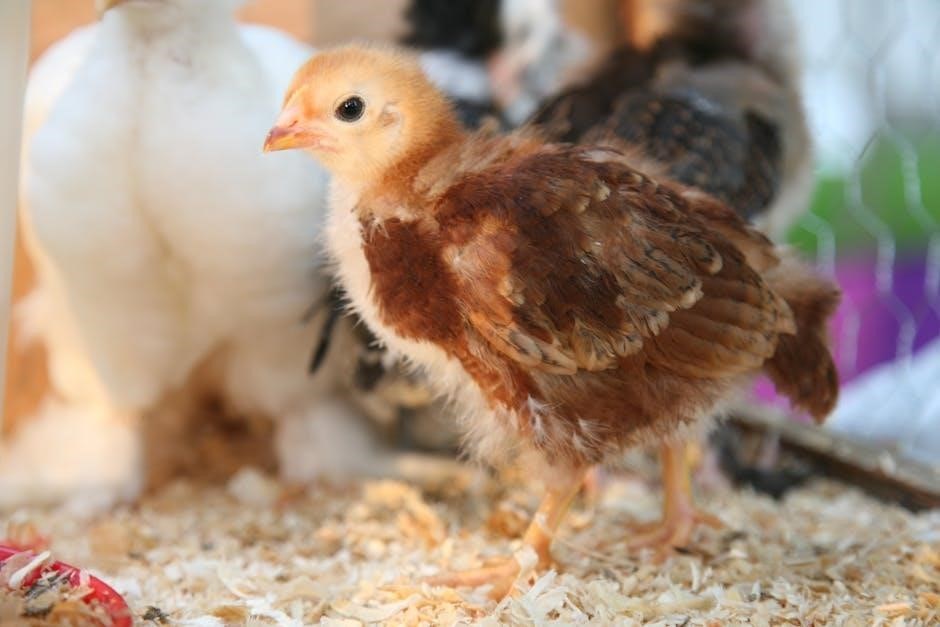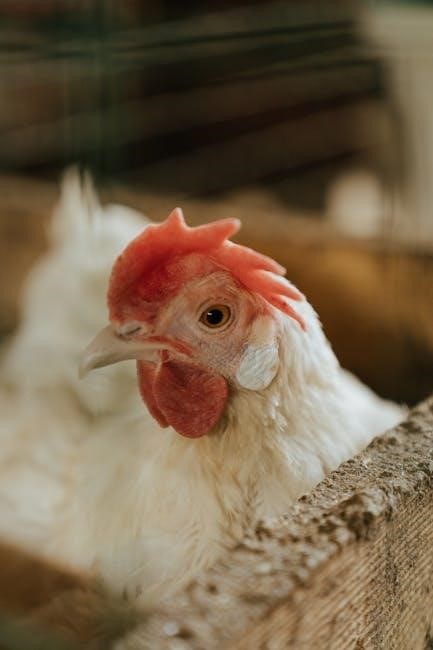
Manual Chicken Coop Door: A Comprehensive Guide

Ensuring the safety of your chickens is paramount. This guide delves into the world of manual chicken coop doors, offering insights into building, installation, and maintenance. Discover how these doors provide a secure environment for your flock every dawn and dusk.
For centuries, chicken keepers have relied on manual coop doors to safeguard their flocks. These doors represent a simple yet effective solution for controlling when chickens can access the outside world, offering protection from predators and harsh weather. Unlike their automatic counterparts, manual doors require human intervention for opening and closing, fostering a closer connection between the owner and their birds.
Manual chicken coop doors come in various designs, from basic sliding panels to more elaborate hinged structures. The choice of design often depends on the coop’s construction, available space, and the owner’s personal preferences. Regardless of the specific design, the primary function remains the same: to provide a secure barrier against potential threats.
While automatic doors offer convenience, manual doors provide a sense of control and reliability that many chicken keepers value. They eliminate the risk of mechanical failures or power outages that can plague automatic systems, ensuring that the chickens are always safely enclosed at night. Furthermore, the act of manually opening and closing the door allows the owner to visually inspect the coop and the chickens, potentially identifying any issues early on.
Benefits of Using a Manual Chicken Coop Door
Manual chicken coop doors offer a range of advantages that appeal to many poultry enthusiasts. One of the most significant benefits is their simplicity and reliability. With no complex mechanisms or electronic components, manual doors are less prone to malfunction, ensuring consistent protection for your chickens. This also translates to lower maintenance costs, as there are no parts to replace or repair.
Another key advantage is the enhanced control you have over your flock’s routine. By manually opening and closing the door, you can tailor their access to the outdoors based on weather conditions, seasonal changes, or specific needs. This allows for a more hands-on approach to chicken care, fostering a deeper connection with your birds.
Furthermore, manual doors are often a more affordable option compared to automatic systems. The cost of materials and construction is typically lower, making them an attractive choice for budget-conscious chicken keepers. This cost-effectiveness doesn’t compromise security, as a well-built manual door can provide excellent protection against predators.
Types of Manual Chicken Coop Doors
Manual chicken coop doors come in various designs, each offering unique features and benefits. The simplest type is the sliding door, which operates vertically within a track. This design is easy to build and install, making it a popular choice for DIY enthusiasts. Another common type is the hinged door, which swings open and closed like a regular door. Hinged doors can be positioned to swing inward or outward, depending on the coop’s layout and personal preference.
For those seeking a more secure option, the guillotine-style door is an excellent choice. This type of door features a heavy panel that drops down to block the entrance, providing a robust barrier against predators. Guillotine doors often incorporate a locking mechanism for added security.
Another variation is the Dutch door, which is divided horizontally into two sections. This allows you to open the top half for ventilation while keeping the bottom half closed to contain the chickens. Dutch doors offer flexibility and can be particularly useful in warmer climates.
Materials Needed for Building a Manual Chicken Coop Door
Constructing a manual chicken coop door requires careful selection of materials to ensure durability and security. The primary material for the door itself is typically wood, such as plywood, pine, or cedar. Plywood offers affordability and ease of use, while pine provides a balance of cost and strength. Cedar is a more premium option, known for its natural resistance to rot and insects.
For the door frame and tracks, consider using sturdy lumber or aluminum C-channel. Lumber provides a traditional look and is easy to work with, while aluminum C-channel offers superior durability and weather resistance.
To connect the various components, you’ll need screws, nails, or bolts. Choose fasteners that are appropriate for the materials you’re using and consider using rust-resistant options for outdoor applications.
Additional materials may include hinges (for hinged doors), rope or cable (for guillotine doors), and a locking mechanism to secure the door. Don’t forget essential tools like a saw, drill, measuring tape, and screwdriver to facilitate the construction process.
Step-by-Step Guide to Building a Simple Manual Chicken Coop Door
Embark on constructing your DIY manual chicken coop door with these straightforward steps. Firstly, measure the door opening to determine the dimensions of your door and frame. Cut the wood for the door and frame according to these measurements. Assemble the frame using screws or nails, ensuring it’s square and sturdy.
Next, attach the door to the frame. If you’re building a hinged door, use hinges to connect the door to the frame. For a guillotine-style door, create tracks on either side of the opening using lumber or C-channel. The door will slide up and down within these tracks.
Install a locking mechanism to secure the door when it’s closed. This could be a simple latch, bolt, or hook-and-eye closure. Ensure the locking mechanism is predator-proof to protect your chickens.
Finally, test the door to ensure it opens and closes smoothly. Make any necessary adjustments to the frame, tracks, or locking mechanism. Consider painting or sealing the wood to protect it from the elements.
Installation Tips for Manual Chicken Coop Doors
Proper installation is crucial for the functionality and security of your manual chicken coop door. Begin by ensuring the door frame is square and level within the coop opening. Use shims if necessary to achieve a perfect fit. Secure the frame to the coop walls using screws, ensuring they are long enough to penetrate the framing members.
For hinged doors, ensure the hinges are properly aligned and securely attached to both the door and the frame. Use screws that are appropriate for the material of your coop and door. Test the door’s swing to ensure it moves freely without binding.
If you’ve opted for a sliding door, make sure the tracks are aligned and securely fastened to the coop. The door should slide smoothly within the tracks without getting stuck. Lubricate the tracks with silicone spray or dry lubricant to minimize friction.
Install the locking mechanism in a location that is easily accessible but also predator-proof. Ensure the latch or bolt engages securely with the frame. Test the locking mechanism to ensure it functions properly and keeps the door securely closed.
Maintaining Your Manual Chicken Coop Door
Regular maintenance is essential to prolong the life and effectiveness of your manual chicken coop door. Inspect the door and frame regularly for signs of damage, such as cracks, rot, or warping. Repair any damage promptly to prevent further deterioration.
For wooden doors, apply a sealant or paint to protect the wood from moisture and the elements. Reapply the sealant or paint every year or two, or as needed. Clean the door regularly to remove dirt, debris, and droppings. Use a mild soap and water solution and a soft brush.
Check the hinges or tracks for wear and tear. Lubricate hinges with oil. Tighten any loose screws or replace them if they are stripped. For sliding doors, clean the tracks regularly to remove debris. Lubricate the tracks with silicone spray or dry lubricant to ensure smooth operation.
Inspect the locking mechanism regularly. Clean and lubricate the latch or bolt to ensure it engages smoothly. Replace any worn or damaged parts. By performing regular maintenance, you can keep your manual chicken coop door in good working condition for many years.
Safety Considerations When Using a Manual Chicken Coop Door
Safety should be a top priority when using a manual chicken coop door. Always ensure the door is securely latched or locked at night to protect your chickens from predators. Regularly inspect the surrounding area for signs of predator activity.
When opening or closing the door, be mindful of your fingers and hands. Avoid placing them in areas where they could get pinched or caught. If children are involved in opening or closing the door, supervise them closely.
Ensure the door is easy to operate, especially in emergencies. Practice opening and closing the door quickly in case you need to secure the chickens in a hurry. Consider installing a secondary locking mechanism for added security.
Be aware of the weather conditions. In extreme weather, such as high winds or heavy snow, the door may be difficult to open or close. Take precautions to ensure the door remains functional in all weather conditions. Regularly check the door’s operation to ensure smooth and safe use.
Troubleshooting Common Issues with Manual Chicken Coop Doors

Manual chicken coop doors, while simple, can sometimes present issues. One common problem is the door becoming stuck. This can occur due to warped wood, debris accumulation in the tracks, or ice buildup in winter. Regularly cleaning the tracks and lubricating moving parts can help prevent this.
Another frequent issue is the latch failing to secure properly. This could be due to a misaligned latch, a loose screw, or a damaged latch mechanism. Check the alignment, tighten screws, and replace damaged parts as needed. Predators might also try to pry at the door, so reinforce the latch if necessary.
Sometimes, the door may be too heavy or difficult to lift. This could be due to the door’s size, the material used, or a poorly designed lifting mechanism. Consider reducing the door’s weight, improving the lifting mechanism, or adding a counterweight.
In cold weather, freezing can cause the door to stick or become inoperable. Applying de-icer or warming the door can help. Regularly inspect the door for any signs of damage or wear.

Alternatives to Manual Chicken Coop Doors
While manual chicken coop doors offer simplicity and affordability, several alternatives cater to different needs and preferences. The most prominent alternative is the automatic chicken coop door, which opens and closes based on a timer or light sensor, automating the daily task. These doors offer convenience and ensure chickens are safe at night and can roam freely during the day.
Another option is a solar-powered automatic door, which utilizes solar energy to power the opening and closing mechanism. This provides an eco-friendly and energy-efficient solution. Smart chicken coop doors, controlled remotely via smartphone apps, are also gaining popularity.
For those seeking a balance between manual and automatic, spring-loaded doors provide assisted opening and closing. These doors require a manual push or pull but are easier to operate than traditional manual doors.
Finally, consider the DIY automatic door, constructed using readily available parts like electric car antennas or Arduino systems. This option combines customization with automation.
Cost Analysis: Manual vs. Automatic Chicken Coop Doors

When choosing between manual and automatic chicken coop doors, cost is a significant factor. Manual doors are generally the most budget-friendly option. The primary costs involve materials like wood, hinges, and latches, which are relatively inexpensive and can be sourced from local hardware stores or even repurposed. DIY enthusiasts can further reduce costs by utilizing scrap materials.
Automatic doors, on the other hand, involve a higher initial investment. Pre-made automatic door openers retail at a higher price, encompassing the cost of the motor, timer, light sensor, and housing. Solar-powered and smart doors command an even higher price due to the added technology.
However, the long-term costs should also be considered. While manual doors require no electricity, automatic doors consume minimal power. DIY automatic doors can potentially save money, but require time and technical skills. Ultimately, the best choice depends on your budget, technical abilities, and desired level of convenience.
Choosing the right chicken coop door – manual or automatic – hinges on your individual needs and lifestyle. If you value simplicity, affordability, and a hands-on approach, a manual chicken coop door may be the ideal choice. Manual doors offer a cost-effective solution for securing your flock, especially if you’re comfortable with basic construction and daily coop management.
Consider your daily routine and availability. If you have a consistent schedule and don’t mind opening and closing the coop door each morning and evening, a manual door can be perfectly adequate; However, if you frequently travel, have unpredictable hours, or simply prefer a more automated system, an automatic door may be more suitable.
Ultimately, the decision rests on balancing convenience, cost, and personal preferences. Weigh the pros and cons of each option, considering your specific circumstances and priorities. A manual door offers a reliable and budget-friendly solution for chicken keepers who prioritize simplicity and hands-on care.